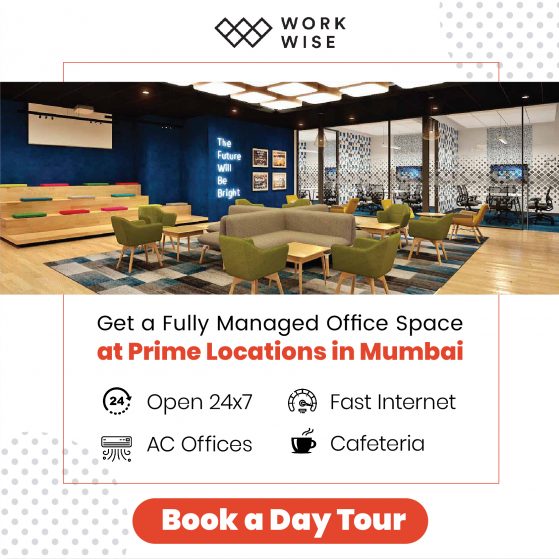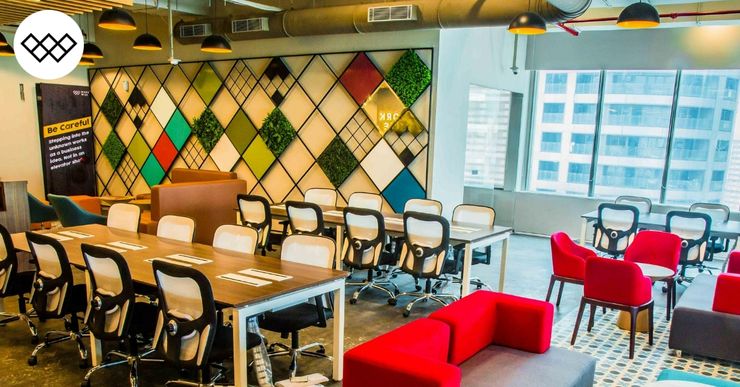
Coworking Spaces And Employee Engagement: The Obvious Connection Most Of Us Miss!
Millennials (the present) and Generation Z (the upcoming) employees are touted as the ‘creative class.’ Both groups refuse to tread the traditional paths. Be it the choice to work as freelancers, or to switch companies (and in some cases, careers), the routes they forge are very different. When it comes to employee engagement, the ‘openness’ and collaborative spirit found in coworking spaces are just right for them!
Another reason why shared workspaces are so popular with the workforce of the future is the design. The rigidity of traditional workspaces often hinder productivity. Coworking spaces with their open areas, ergonomic furniture, and biophilic design contribute to keeping employees motivated and engaged.
How Does Workplace Design Impact Employee Engagement?
The story goes something like this…
Steve Jobs walked into the Pixar offices and found that there were three different campuses, and each one was home to a different department. Jobs soon grasped that separating people hindered collaborating, idea sharing and solution making.
He then redesigned Pixar’s office.
The new space had a colossal atrium that subtly encouraged employees to make eye contact. Employees who belonged to different divisions of the company began communicating. By keeping workers from all departments in an open environment, Steve promoted the idea of cross-pollination and brought about the present revolutionary rise of the animation studio.
The gist of the real-life example is that when employees remain in formal workplaces with cramped cubicles, productivity tends to take a hit. By giving each worker a corner, for lack of a better word, you reduce output. Reduced efficiency negatively affects their engagement.
Allowing employees a free, unrestricted space to work in, results in quite the opposite. It engages them completely and unreservedly.
Why Are Coworking Spaces Naturally Great For Employee Engagement?
Coworking spaces are intrinsically great for employee engagement because they maximise the three critical Ps:
- Potential
- Productivity
- Performance
How do they do so? One, they allow a worker the discretion to choose when to work and also where to work, given the flexibility of choosing between open and private spaces. Two, they are tangibly and intangibly designed to propel engagement. We explore both reasons below, extensively.
The Flexibility Of The Coworking Space
Flexibility encompasses how employees work, when they work, and where they work. Coworking spaces takes care of all three. In more explicit words, they have a considerable measure of freedom within their workspace which results in greater productivity and hence, engagement.
When workers have control over choices, they become engaged. For instance, if an employee knows that have access to privacy (if and when they need it), they are more likely to dive into a project enthusiastically. A shared workplace caters to this need.
Moreover, no two employees are the same. While one may require a rigid 8 to 5 structure to work at 100% efficiency, another may work better during the night. Conventional offices rarely offer this choice, unlike coworking areas.
The Environment Of Shared Work Places
A stimulating environment, i.e. one that is designed vibrantly and is always buzzing with energy and activity, tends to improve performance. This is especially true for extrovert workers and employees who work on complicated projects. On the flip side, a dull office, that’s always silent, and doesn’t encourage collaboration, often kills innovation and productivity.
Coworking spaces are designed to counter this rigidity of conventional workspaces. With the liberal use of bright colour schemes and the perfect balance between open and closed workspaces, coworking spaces are naturally good at spurring employee engagement. Plus, the incredible opportunities for networking and collaboration add to the effectiveness of the workplace when it comes to promoting innovation and engagement.
1 out of 5 employees say that a space to relax increases their productiveness. A break away from the desk reduces work pressure and of physical issues like eye-strain and backache. Combined, they help an employee focus better.
The Work Culture
In a conventional corporate office, departments are siloed. Rarely, if ever, do employees of one division wander into another, even when they require help. The reluctance to approach fellow-employees is built into the work culture, which hinders productivity and engagement.
When an individual is inspired by healthy competition, they are more engaged with their work.
Coworking spaces are essentially communities. The work culture is based on the foundation of freely reaching out to other members. The feeling of being a part of something greater, a family, motivates co-workers to surpass performance and excel.
The Collaborative Spirit
In a 2014 survey by Jones Lang La Salle, 74% respondents agreed that the three most valuable factors in a company were:
- Thinking
- Talking
- Brainstorming
It is when employees have access to other people to communicate, share ideas or brainstorm concepts, that output increases, i.e., it is collaboration that pushes productivity.
For collaboration to occur, flexible spaces are critical. Coworking spaces brim with the collaborative spirit, thus making them inherently superior for employee engagement.
Furthermore, shared workspaces are melting pots of backgrounds. In the same space, diverse talents exist. The heterogeneity further promotes collaboration, most of which end up to be unique. When co-workers create or work on something inimitable, they are more engaged.
Coworking Spaces And Employee Engagement: The Connection That Can’t Be Denied
The key drivers of employee engagement are involvement, enthusiasm, and workplace design. Together, they lead to a more satisfied worker. A positively designed workplace with a supportive culture offers a shoulder to the physical and mental wellbeing of an employee.
Coworking spaces cater to all these requirements. It is why more individuals are accepting that shared workplaces assist them to perform more reliably. From the fast-paced setting to the flexibility, from peer-based accountability to the amenities, each element of coworking space drives employee engagement to a better level.
The link between employee engagement and shared work areas is pretty obvious, yet it is one that is most overlooked. Be an early adopter and leverage the value with WorkWise. Get in touch with us for coworking spaces in Mumbai, equipped with both open and private areas, and vibrant, ergonomic facilities!




